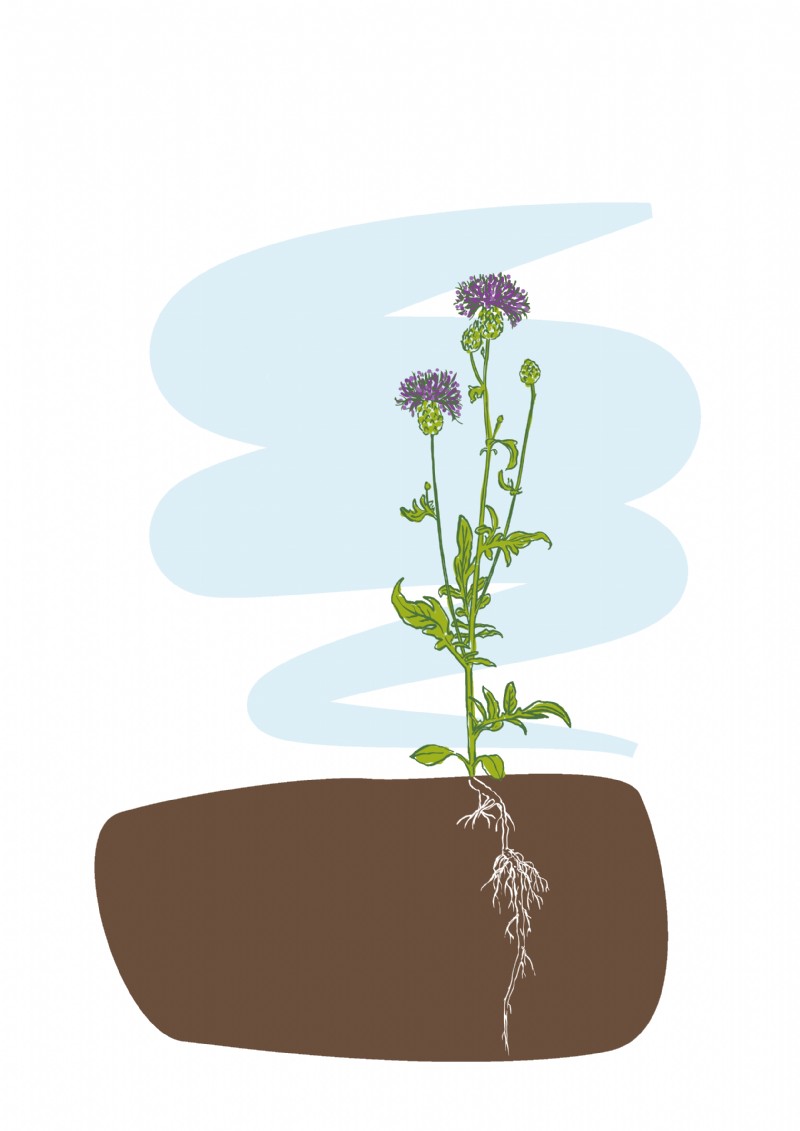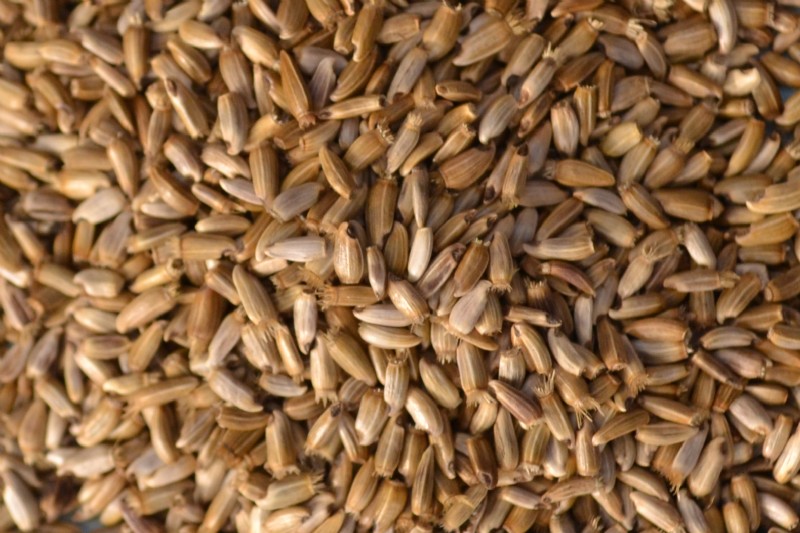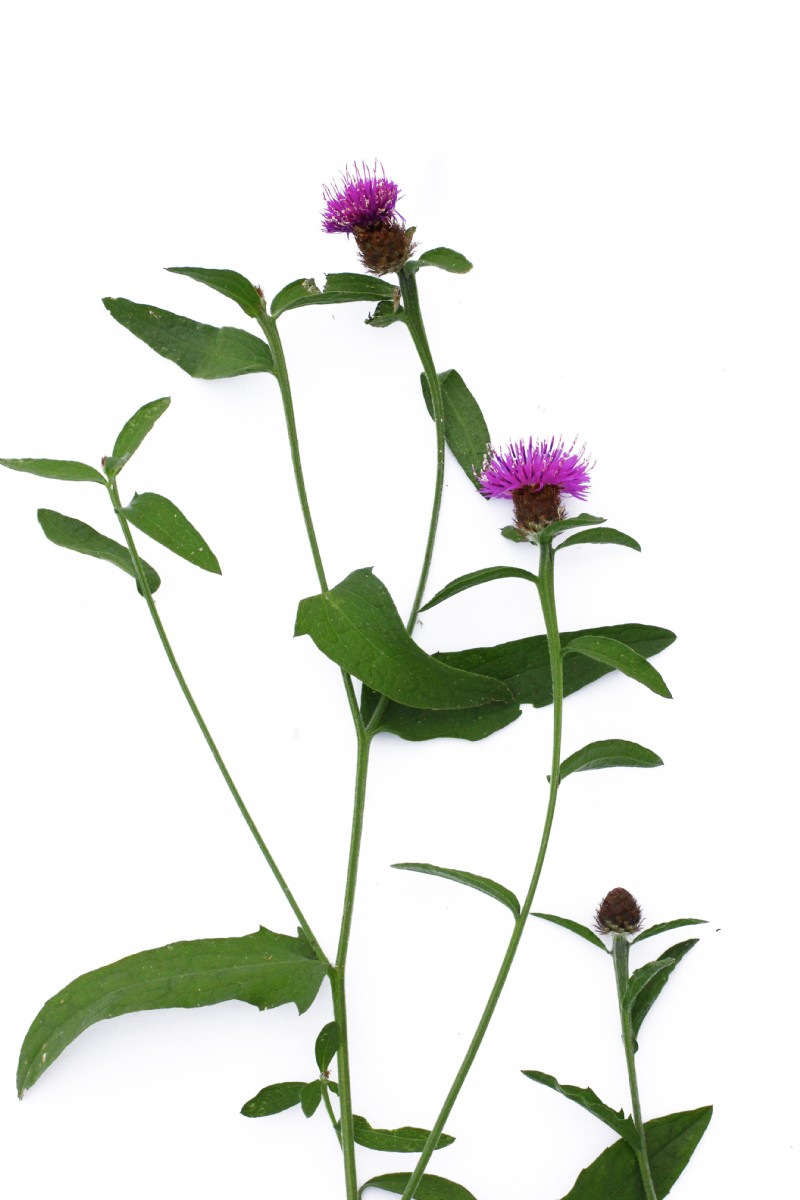Lesser Knapweed
Lesser knapweed is also known as common black knapweed. It is a competitive wild flower found throughout the UK and parts of western Europe, in old meadows and roadsides. It may be known as 'hardheads'.
Uses
High quality nectar attracts hoverflies, honey bees and bumblebees so has a high wildlife value.
Persistence
A perennial species, which will persist better if allowed to set seed.
Strengths
It is a fairly reliable species when sown as part of a meadow mixture, although on favourable ground, without management it can take over.
Frost Tolerance
This is a frost tolerant species.
Ideal Sowing Time
Sow in autumn or spring.
Management
Knapweed is easy to grow, however is relatively aggressive so requires cutting to manage.
Distinguishing characteristics
Seed
This is an oblong shaped seed, with two flat sides. It has a stripey pale green to gold colour. It has a reasonably smooth surface and is 3mm in length.
Seedling
The lesser knapweed seedling has a pair of oblong cotyledons, which are slightly longer than they are wide. The first true leaves are longer and narrower, with the beginnings of widely toothed edges.
Flowering Plant
This is a dark green, stout and hairy plant. The lower leaves are lanceolate in shape and usually undivided. The upper leaves can become more divided, with pinnate lobes. The flower head is thistle like and maroon to purple in colour.
Additional Info
Flowers June-September. Knapweed is often known as hardheads, describing the nobby seedheads (knap being an archaism for ‘head'). Lesser Knapweed is a fantastic provider of nectar for bees and butterflies, and seed supply for finches. Its petals are edible, can be used in salads.
Works well with
Agrinomy, autumn hawkbit, betony, field scabious, rough hawkbit and small scabious.You can find Lesser Knapweed in the following mixtures
- Cotswold Wild Flora
- Chalk & Limestone Soil Mixture
- Meadow Over-Seeding Just Wild Flowers
- Acid & Clay Soil Mixture
- Floristically Enhanced Field Margin (CIPM2/IPM2/AB8)
- Damp Meadow
- Nectar Stewardship Mix (CIPM2/IPM2/AB8)
- Heavy Land Legume & Herb Rich Sward (GS4/SAM3/CSAM3)
- Light Land Legume & Herb Rich Sward (GS4/SAM3/CSAM3)
- Operation Pollinator Mix (AHL1/CAHL1/AB1)
- Light Land Operation Pollinator Just Legumes 70% ORGANIC
History
This species is native to Europe and Russia.






